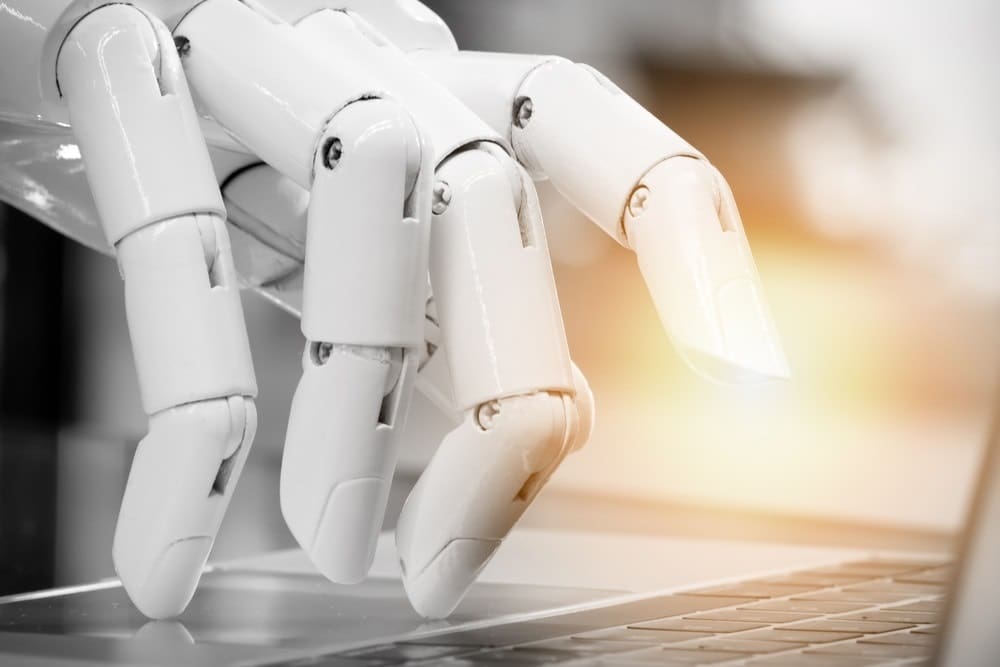The audit profession is facing unprecedented demands, but there are a host of tools available to help. James Bone outlines the benefits to automating audit tasks.
Internal audit is under increasing pressure across many quarters from challenges to audit objectivity, ethical behavior and requests to reduce or modify audit findings.[1] “More than half of North American Chief Audit Executives (CAEs) said they had been directed to omit or modify an important audit finding at least once, and 49 percent said they had been directed not to perform audit work in high-risk areas.” That’s according to a report by The Institute of Internal Auditors (IIA) Research Foundation, based on a survey of 494 CAEs and some follow-up interviews.
Challenges to audit findings are a normal part of the process for clarifying risks associated with weakness in internal controls and gaps that expose the organization to threats. However, the opportunity to reduce subjectivity and improve audit consistency is critical to minimizing second guessing and enhanced credibility. One of the ways to improve audit consistency and objectivity is to reframe the business case for audit automation.
Audit automation provides audit professionals with the tools to reduce focus on low-risk, high-frequency areas of risk. Automation provides a means for detecting changes in low-risk, high-frequency areas of risk to monitor the velocity of high-frequency risks that may lead to increased exposures or development of new risks.
More importantly, the challenges to audit findings associated with low-frequency, high-impact risks (less common) typically deals with an area of uncertainty that is harder to justify without objective data. Uncertainty or “unknown unknowns” are the hardest risks to justify using the subjective point-in-time audit methodology. Uncertainty, by definition, requires statistical and predictive methods that provide auditors with an understanding of the distribution of probabilities, as well as the correlations and degrees of confidence associated with risk. Uncertainty or probability management provides auditors with next-level capabilities to discuss risks that are elusive to nail down. Automation provides internal auditors with the tools to shape the discussion about uncertainty more clearly and to understand the context for when these events become more prevalent.
Risk communications is one of the biggest challenges for all oversight professionals.[2] According to an article in Harvard Business Review,
“We tend to be overconfident about the accuracy of our forecasts and risk assessments and far too narrow in our assessment of the range of outcomes that may occur. Organizational biases also inhibit our ability to discuss risk and failure. In particular, teams facing uncertain conditions often engage in groupthink: Once a course of action has gathered support within a group, those not yet on board tend to suppress their objections — however valid — and fall in line.”
Everyone in the organization has a slightly different perception of risk that is influenced by heuristics developed over a lifetime of experience. Heuristics are mental shortcuts individuals use to make decisions. Most of the time, our heuristics work just fine with the familiar problems we face. Unfortunately, we do not recognize when our biases mislead us in judging more complex risks. In some cases, what appears to be lapses in ethical behavior may simply be normal human bias, which may lead to different perceptions of risk. How does internal audit overcome these challenges?
The Opportunity Cost of Not Automating
Technology is not a solution, in and of itself; it is an enabler of staff to become more effective when integrated strategically to complement staff strengths and enhance areas of opportunity to improve. Automation creates situational awareness of risks. Technology solutions that improve situational awareness in audit assurance are ideally the end goal. Situational awareness (SA) in audit is not a one-size-fits-all proposition. In some organizations, SA involves improved data analysis; in others, it may include a range of continuous monitoring and reporting in near real time. Situational awareness reduces human error by making sense of the environment with objective data.
Research is growing demonstrating that human error is the biggest cause of risk in a wide range of organizations, from IT security to health care and organizational performance.[3][4][5] The opportunity to reduce human error and to improve insights into operational performance is now possible with automation. Chief Audit Officers have the opportunity to lead in collaboration with operations, finance, compliance and risk management on automation that supports each of the key stakeholders who provide assurance.
Collaboration on automation reduces redundancies for data requests, risk assessments, compliance reviews and demands on IT departments. Smart automation integrates oversight into operations, reduces human error, improves internal controls and creates situational awareness where risks need to be managed. These are the opportunity costs of not automating.
A Pathway to Enhanced Assurance
Audit automation has become a diverse set of solutions offered by a range of providers but that point alone should not drive the decision to automate. Developing a coherent strategy for automation is the key first step. Whether you are a Chief Audit Officer starting to consider automation or you and your team are well-versed in automation platforms, it may be a good time to rethink audit automation, not as a one-off budget item, but as a strategic imperative to be integrated into operations focused on the things that the board and senior executives think are important. This will require the organization to see audit as integral to operational excellence and business intelligence. Reframing the role of audit through automation is the first step toward enhanced assurance.
Auditors are taught to be skeptical while conducting attestation engagements; however, there is no statistical definition for assurance. Assurance requires the use of subjective judgments in the risk assessment process that may lead to variability in the quality of audits between different people within the same audit function.[6] According to ISACA’s IS Audit and Assurance Guideline 2202 Risk Assessment in Planning, Risk Assessment Methodology 2.2.4, “all risk assessment methodologies rely on subjective judgments at some point in the process (e.g., for assigning weights to the various parameters). Professionals should identify the subjective decisions required to use a particular methodology and consider whether these judgments can be made and validated to an appropriate level of accuracy.” Too often these judgments are difficult to validate with a repeatable level of accuracy without quantifiable data and methodology.
Scientific methods are the only proven way to develop degrees of confidence in risk assessment and correlations between cause and effect. “In any experiment or observation that involves drawing a sample from a population, there is always the possibility that an observed effect would have occurred due to sampling error alone.”[7] The only way to adequately reduce the risk of sampling error is to automate sampling data. Trending sample data helps auditors detect seasonality and other factors that occur as a result of the ebb and flow of business dynamics.
A Pathway to Enhanced Assurance
- Identify the greatest opportunities to automate routine audit processes.
- Prioritize automation projects each budget cycle in coordination with operations, risk management, IT and compliance as applicable.
- Prioritize projects that leverage data sources that optimize automation projects across multiple stakeholders (operational data used by multiple stakeholders). One-offs can be integrated over time as needed.
- Develop a secondary list of automation projects that allow for monitoring, business intelligence and confidentiality.
- Design automation projects with levels of security that maintain the integrity of the data based on users and sensitivity of the data.
- Consider the questions most important to senior executives.[8]
“Look, I have got a rule, General Powell ‘As an intelligence officer, your responsibility is to tell me what you know. Tell me what you don’t know. Then you’re allowed to tell me what you think. But you [should] always keep those three separated.”[9]
– Tim Weiner reporting in the New York Times about wisdom former Director of National Intelligence Mike McConnell learned from General Colin Powell
The business case for audit
automation has never been stronger given the demands on internal audit. Today,
the tools are available to reduce waste, improve assurance, validate audit
findings and provide for enhanced audit judgment on the risks that really
matter to management and audit professionals.
[1] https://www.journalofaccountancy.com/issues/2015/jun/internal-audit-objectivity.html
[2] https://hbr.org/2012/06/managing-risks-a-new-framework
[3] https://www.cio.com/article/3078572/human-error-biggest-risk-to-health-it.htm
[4] https://hbr.org/2016/09/the-biggest-cybersecurity-threats-are-inside-your-company
[5] https://www.irmi.com/articles/expert-commentary/performance-management-and-the-human-error-factor-a-new-perspective
[6] https://m.isaca.org/Knowledge-Center/ITAF-IS-Assurance-Audit-/IS-Audit-and-Assurance/Documents/2202-Risk-Assessment-in-Planning_gui_Eng_0614.pdf
[7] Babbie, Earl R. (2013). “The logic of sampling.” The Practice of Social Research (13th ed.). Belmont, CA: Cengage Learning. pp. 185–226. ISBN 978-1-133-04979-1.
[8] https://fas.org/irp/congress/2004_hr/091304powell.html
[9] http://casnocha.com/2007/12/what-you-know-w.html



 James Bone’s career has spanned 29 years of management, financial services and regulatory compliance risk experience with Frito-Lay, Inc., Abbot Labs, Merrill Lynch, and Fidelity Investments. James founded Global Compliance Associates, LLC and TheGRCBlueBook in 2009 to consult with global professional services firms, private equity investors, and risk and compliance professionals seeking insights in governance, risk and compliance (“GRC”) leading practices and best in class vendors.
James Bone’s career has spanned 29 years of management, financial services and regulatory compliance risk experience with Frito-Lay, Inc., Abbot Labs, Merrill Lynch, and Fidelity Investments. James founded Global Compliance Associates, LLC and TheGRCBlueBook in 2009 to consult with global professional services firms, private equity investors, and risk and compliance professionals seeking insights in governance, risk and compliance (“GRC”) leading practices and best in class vendors.






